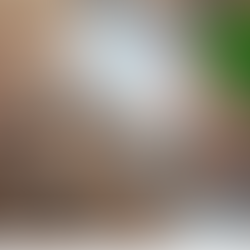3 Non-Boring Activities for Teaching Lab Safety that your students will love
- Androy
- Jul 20, 2022
- 3 min read
Updated: Jul 5, 2025
If you're a science teacher you know that teaching lab safety is probably one of the most important topics for any student embarking on any natural and/or physical science course.
In order to minimize accidents and maintain a safe and productive laboratory environment students should be taught the following three concepts:
Proper lab conduct and the importance of personal protection, are covered in the lab safety rules.
The location and proper use of laboratory safety equipment such as fire extinguishers and the first aid kit.
Hazards associated with different chemicals which come with knowing the lab safety symbols and their meanings.
Here are a few fun activities for teaching these concepts to your science to switch things up this school year:
1. Lab Safety Dominoes
Students are placed in small groups of 2- 4, and each student is given five "dominoes" (cards with the safety symbols and other descriptions printed on domino style). Students are then required to match a hazard symbol with its correct description; an example of an item /substance which has that specific hazard or a hazard symbol with a precautionary measure for handling that substance. See examples of this below.
By playing lab safety Dominoes students can learn to identify the common safety symbols and their associated hazards. Ensure that students are at least familiar with the different safety symbols prior to the activity.
2. Lab Safety Bingo!
Bingo games in the classroom are a great way to get your students to review material in a fun and engaging way. Lab safety Bingo follows the traditional rules of Bingo, you (or an assigned student) will call out the clues from a call sheet and students will match the clue with the correct safety symbol or safety equipment. When they make 4 matches they shout BINGO!
This set comes with 28 different Bingo cards and an editable calling sheet to keep things interesting.
Here is the Laboratory Apparatus version of this game for reviewing common lab tools and their uses.
3. Scavenger Hunt
Knowing the location of different safety equipment in the laboratory and how to use them is something I often overlooked in the past. When I did address this I often did a brief lab tour where I simply pointed out the location of the fire extinguisher, chemical fume hood and first aid kit to my students, which is fine...but also boring.
I have found that turning this activity into a scavenger hunt is a lot more engaging and students are less likely to forget if they find these items for themselves.
Students are first placed into small groups of 2-3 students each. Each group is given a series of clues based on the different safety items. Clues can be in the form of riddles, questions or descriptions.
Once students have figured out the identities of the safety item and recorded them on their answer sheets, they will walk around the laboratory/classroom and find these items.
To ensure that students move around and find the actual items codes are attached to each safety item. These codes are then used to decipher a cryptogram with a hidden safety message.
To make this more challenging you can time this activity, or offer bonus points to the first three groups who can decipher the cryptogram.
After playing all these games, I usually reward my students with a little token to keep them motivated. The science bookmarks featuring a quote by famous scientists are a great little gift for students.
Essentials for Lab Safety Lesson Planning
If you plan on teaching lab safety effectively this school year, you will need a few essential items to make your job a little easier.
These items include:
A lab safety routine. When students know what needs to be done at every step during the lab session minimizes the likelihood of accidents occurring.
A checklist of the most important safety and emergency equipment to ensure that your school science lab meets safety standards.
Guidelines for handling chemical accidents in the laboratory.
A lab Safety agreement between teacher and students.
You can access editable versions of these resources as well as worksheets, lesson planning pages, and my eBook on creating effective rubrics in my FREE RESOURCE LIBRARY when you sign up for my mailing list.
Do you want access?

















